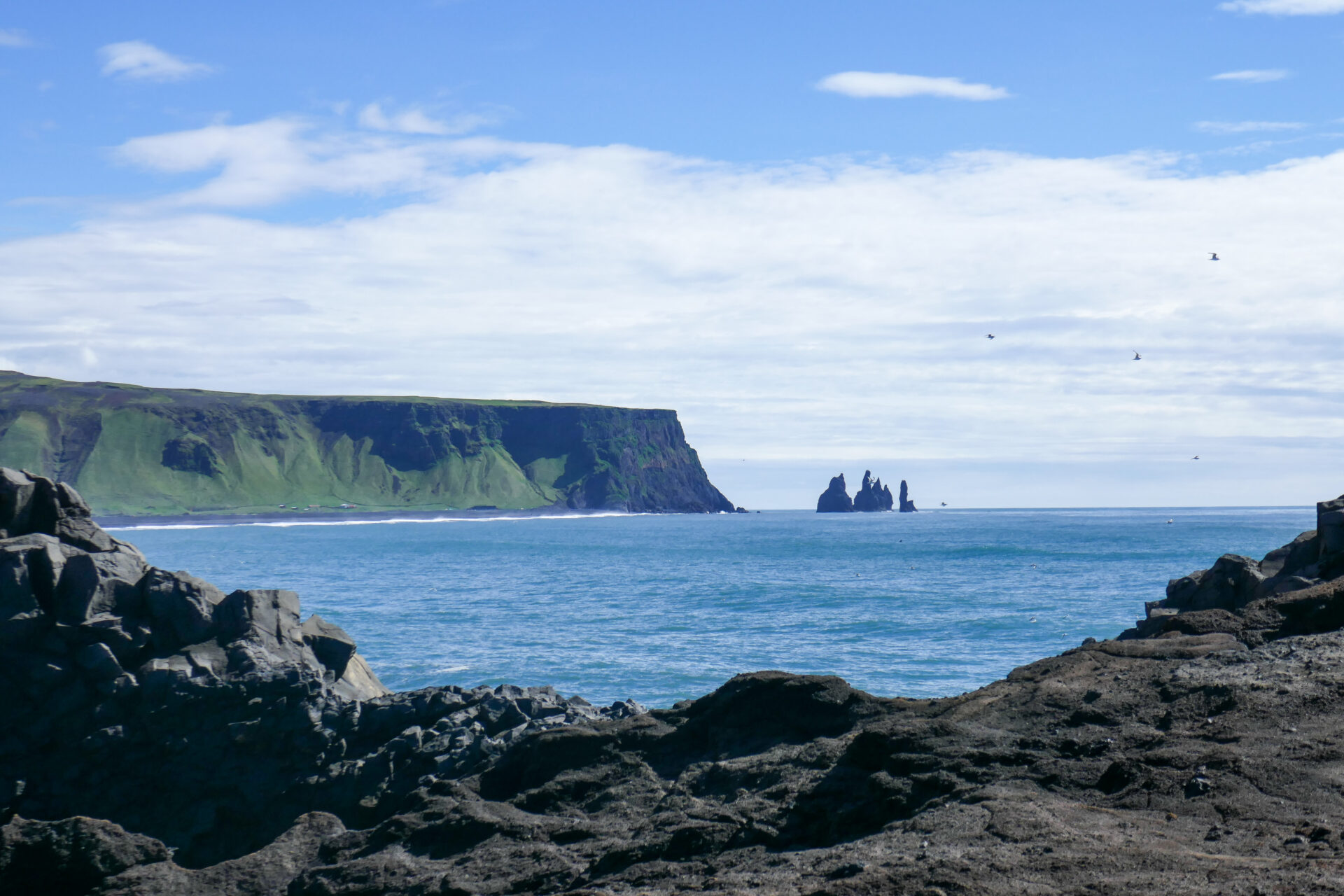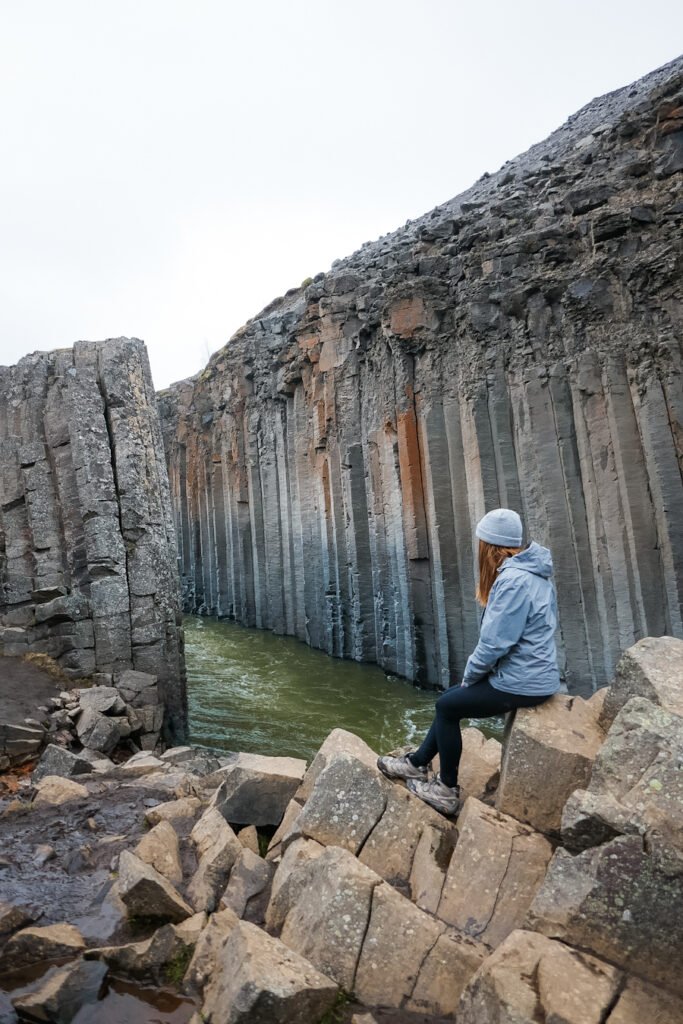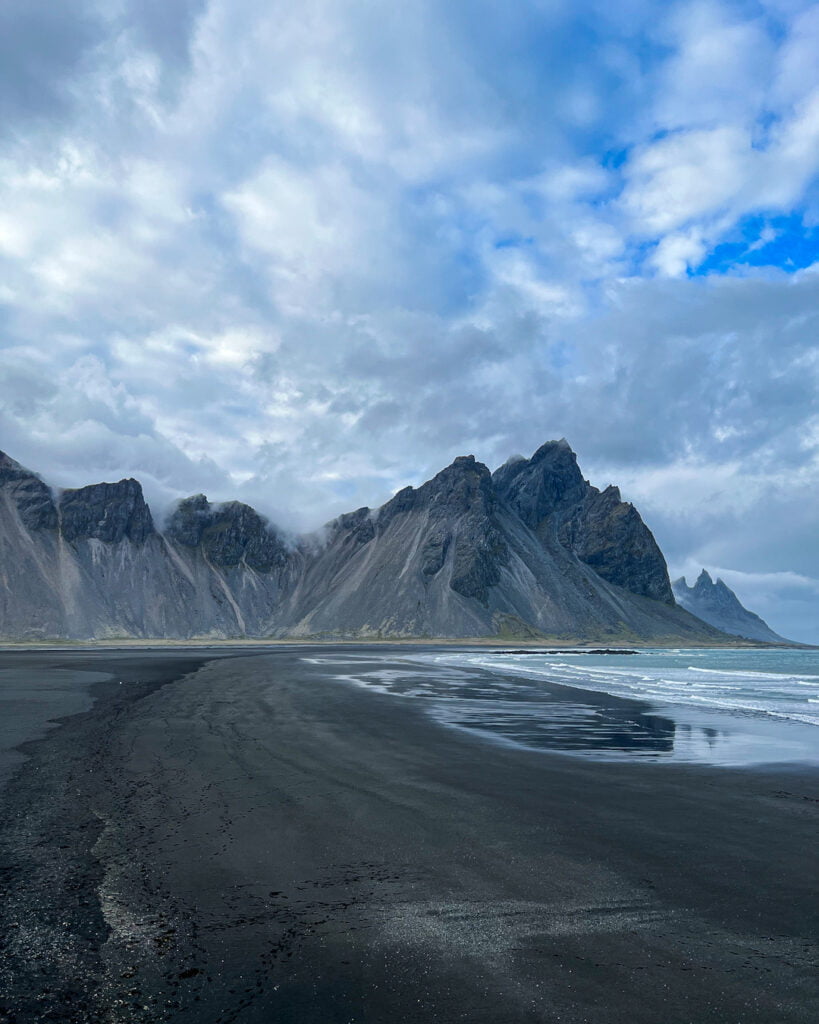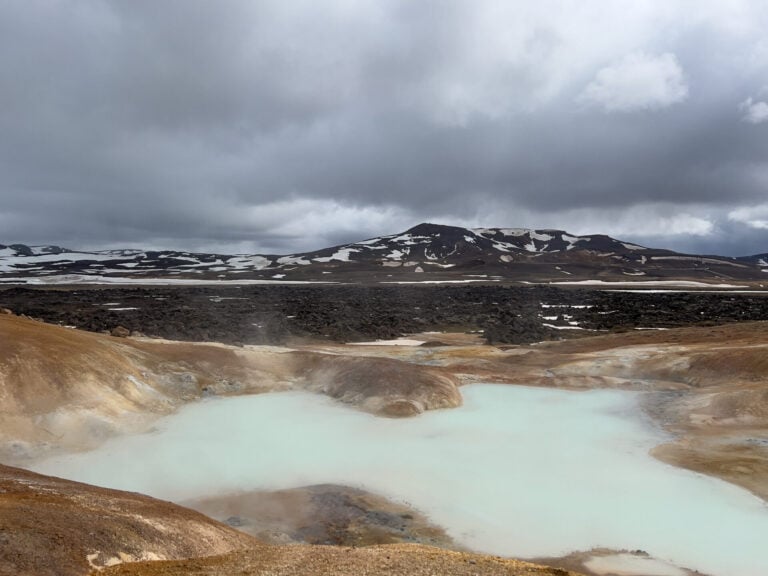16 Epic Things to Do in Iceland

If you’ve read a few of my posts, you’ll know that Iceland is one of my favourite countries I’ve ever visited. The land of fire and ice, this country is one of the most unique places on earth. I absolutely love it there.
Iceland is an outdoor lovers paradise. There is an endless list of world-class hikes, unique geological wonders and once-in-a-lifetime activities to do. I spent two weeks in Iceland on my last trip and that didn’t feel like *nearly* enough time to see everything I wanted to see. I can’t wait to go back soon and spend more time exploring there.
Most of us have limited time in Iceland and narrowing down our itinerary is no easy task. In this post, I’ve shared what I believe to be the 16 BEST things to do in Iceland.

Iceland is incredibly expensive, so I’ve stuck to free things to do as much as I can. There are a couple of paid activities in there, however.
Swim in geothermal waters at the Blue Lagoon
Starting with an obvious one here, but the Blue Lagoon is an absolute must on your trip to Iceland. Yes, it’s busy and touristy, but there’s a reason for it – it’s truly special.
For those who don’t know, the Blue Lagoon is one of the world’s most unique spas. Set amongst the volcanic landscape, the geothermally heated pool is full of milky-blue and mineral-enriched water known for its skin-healing properties.
I’m not a spa person, so wasn’t expecting to love it as much as I did. You can’t beat its setting and environment. I went to a few similar places around Iceland and nowhere matched the experience here, I’d highly recommend visiting.
Tip: The Blue Lagoon is on the Reykjanes Peninsula and is only about a 20-minute drive from the airport. I’d suggest visiting here either as soon as you arrive in Iceland or right before you leave.
Another option is to head to Reykjavik’s Sky Lagoon which is in the city.
Go on a whale watching tour
Iceland is one of the best places in the world to go whale watching. Located just below the Arctic Circle, the country’s rich waters attract multiple species of whales all year round. You have the chance to see Orcas, Minke whales, Humpback whales and Blue whales to name a few.
There are several locations around the country where you have the chance to jump on a tour including Reykjavik, the Snaefellsnes Peninsula, or the whale watching capital of Europe, Húsavík.
This was one of my favourite activities to do in Iceland.


Walk behind a waterfall at Seljalandsfoss
Iceland is known for its powerful and wild waterfalls. During your time in Iceland, it’s unlikely a day will go by where you won’t see at least one. Seljalandsfoss was one of my favourite waterfalls I saw while visiting Iceland. It’s one of Iceland’s top tourist attractions and for good reason.
What’s unique about this waterfall is you can easily walk behind the waterfall’s giant cascade.
It’s very slippery so be careful and it goes without saying – prepare to get wet!
Location: Seljalandsfoss is right by the ring road on Iceland’s South Coast.
Check out the best waterfalls in Iceland.
Explore the Snaefellsnes Peninsula
To visit the Snaefellsnes Peninsula, you’ll need to leave the main ring road and head west. As it requires a little more driving, many visitors seem to skip this area but I’d highly recommend spending a day or two exploring here.
There are some fabulous hikes available. It’s also home to the iconic Kirkjufell Mountain. I spent a day driving around the Peninsula and it was one of my favourite places in Iceland. The drive itself without stopping anywhere is worth it – it’s beautiful.
If you’re looking to see Orcas, this is the best place to spot them.


Visit the geothermal wonders at Lake Myvatn
Most people stick to the Golden Circle for their chance to see geothermal activity. However, few people drive north to Lake Myvatn where you have the chance to get even closer to these geothermal marvels.
Lake Myvatn is one of the most volcanically active places in all of Iceland. Right by the road, you’ll find steaming geysers, bubbling mud pools and fumaroles stacked with rocks (steam vents). There are also volcanoes to hike, lava fields to navigate and craters to explore. It is a unique and wonderful place.
I’d personally suggest spending one full day here. There is so much to see and do in Lake Myvatn.
Marvel at Icebergs and see diamonds on the beach
Another popular but worthwhile stop is the Jökulsárlón Glacier Lagoon. This is right off the ring road on the South Coast and allows you to see freshly formed icebergs. The lagoon is at the mouth of the Jökulsárlón glacier and as the ice breaks off, it creates huge icebergs which float out to sea.
It is a once-in-a-lifetime destination and the best part is it’s all completely free (providing you have the means to get there).
Over the road is the famous Diamond Beach. As the icebergs drift out to sea, the waves break them apart. Huge chunks of ice then wash up on the beach and they look like diamonds!
The best time to visit is the spring when the Glacier is starting to melt, but you can visit all year round.


Hike to the stunning Stuðlagil Canyon
The hike to Studlagil Canyon was at the top of my to-do list in Iceland and, wow, it did not disappoint. The canyon consists of stunning black basalt rock columns and a glacier river that flows through. If you go at the right time, this river can be a gorgeous blue/green colour.
You can view Studlagil Canyon from an observation deck. However, the view is obstructed and hiking to the canyon offers the best views.
Location: East Iceland. To get to the start of the hike, you’ll need to park on the east side to get to the start of the hike. The west side is simply a viewing platform.


See a glacier (and walk on one)
As you drive around Iceland, you’ll very quickly spot its magnificent glaciers. These can often be seen from the road, but you didn’t come to Iceland to look at things from afar.
There are different ways you can get up close and personal with glaciers in Iceland. The first option is to book a tour to hike on a glacier. These tours can be quite pricey, but you’ll be with knowledgeable guides who will take you out onto the glacier with the right safety equipment.
If that’s a little out of your budget (it was mine), there are a couple of hikes you can do which get you up close to the glacier. I’d recommend one of the following:
- The Sjónarsker glacier hike is a 3.8-mile trail which takes you to a stunning viewpoint of the glacier. The views took my breath away.
- Another favourite hike of mine was to the Fláajökull glacier. This route is just under 4 miles (6.5km) and is relatively flat. As you get closer, the track can be prone to rock falls so be careful.
- A shorter option is the Sólheimajökull glacier. This is a 20-minute stroll from the car park. When I was here, I saw ice fall off the glacier and form icebergs.
Walk (and swim) between two tectonic plates
Iceland is located on the mid-Atlantic ridge where the Eurasian and North American tectonic plates are moving apart. There are a few places in Iceland where this unique geography is apparent, but the best place to experience it is Thingvellir National Park.
Entrance here is free and you can see both tectonic plates and walk between them. If you’re feeling adventurous, you can opt to swim between the plates in the Silfra fissure as well. There’s a great guide over at Honest Travel Stories which shares everything you need to know about snorkelling at the Silfra Fissure.
Iceland is one of the only places in the world where it’s so accessible to experience the true power of the earth, so definitely add this to your list.


Have Fjaðrárgljúfur Canyon take your breath away
There isn’t a way to describe the true beauty of Fjaðrárgljúfur Canyon. It’s something that has to be seen. The canyon was a filming spot for Game of Thrones which has recently put it on the map.
One of the things I love about Iceland is while it’s beautiful, it isn’t “pretty”, it’s wild and rugged and like nowhere else on earth. This spot sums up all of that. I’ve never seen anything like it.
It’s become more popular in recent years thanks to Game of Thrones, but I still see many itineraries skipping it and I can’t understand why. It was one of the most magnificent places I visited in Iceland.

Explore an abandoned plane wreck
Located on Sólheimasandur beach (South Coast), this DC3 plane wreck is a unique and adventurous spot in Iceland. The plane crash landed in 1973 when the United States Navy plane ran out of fuel and crashed on the beach. Fortunately, everyone survived.
The wreckage is still there to be explored. It’s a little bit of a hike to get there though. While completely flat, you’ll need to walk about an hour each way to see the plane and it’s quite exposed so gets very windy. It’s well worth-it though in my opinion.
There is also a shuttle bus that offers to drive you to the wreck, however it can be quite pricey depending on the season so we opted to walk.
The plane is on the south coast, about 5 miles further east than the Skogafoss waterfall. It’s signposted and easy to find. There’s a car park available.

See the Northern Lights
Seeing the wonderous Northern Lights is on many people’s bucketlist and Iceland is one of the top places in the world to see them. Each year, millions of tourists head to Iceland in the hope of seeing this marvel.
Your best chance at seeing the Northern Lights in Iceland is between November and March when the days are the shortest and nights the darkest. You can book onto a tour to ‘chase’ the Northern Lights or simply try and spot them yourself.
You’ll need to be away from artificial light, so if you are hoping to see them without paying for a tour, I’d recommend staying somewhere remote (or where you can easily drive away from the light). Many hotels offer a Northern Lights service in the winter and will wake you up if they are visible.
I got to see them on my first trip to Iceland when I was 17. It was one of my all-time favourite travel experiences.
Search for Puffins
Iceland is home to more than 60% of the world’s Atlantic Puffin population making it a great spot to see these small but amazing birds. If you’re not sure what a puffin is, the best way I can describe it is a parrot crossed with a penguin (sorry to all the animal biologists out there).
Puffins generally arrive in Iceland from April and leave at the end of the summer, so you’ll to visit in the warmer months for a chance at seeing one. The puffins nest all around the coast and one of the best places to spot them is at Dyrhólaey on the South Coast. This is a stunning location so even if you don’t get to see the puffins, it’s well worth visiting.
Another hot spot for puffins is Húsavík in the North of the country. Many of the whale watching tours also include a stop at Puffin Island where you can see the birds in their hundreds. It’s a remarkable sight.
Find serenity at Vestrahorn
The Stokksnes Peninsula is home to the iconic Vestrahorn mountain. It’s one of the most breath-taking sights in all of Iceland. The mountain towers over a gorgeous black sand beach. The tide was out when I visited and the mountains were reflecting in the pools of water, it was beautiful.
When I think of Iceland, the views and scenery here are what I think of. It’s the epitome of the island’s wild beauty and unique geography. It’s located on the South-East coast, not far from the town of Höfn. This is also where I saw wild reindeer for the first time.
It’s one of the few outdoor attractions in Iceland that charge a fee. When I went in May 2022, it cost me 900ISK to enter (£5) but is well worth-it.
I went at sunset and had the entire beach to myself which I really wasn’t expecting. It was one of my favourite moments on my entire trip.


Hike an active volcano
Iceland has numerous volcanoes including the r. The volcano erupted in 2021 and millions of visitors rushed there to watch its eruption. As it wasn’t a violent eruption, you could get right up to the scolding lava. After another brief eruption in 2022, the volcano has since gone quiet but you can still hike up to the freshly formed lava fields.
This landscape is non-comparable to anything I’ve ever seen before. It was like being on another planet.
The volcano has erupted again since I visited so a few of the trails have changed, but you can visit the Reykjanes Peninsula website for the latest information.
I’d suggest stopping here as soon as you arrive in Iceland or on your way back to the airport. It’s only a short drive away.
Swim in a geothermal river
The Reykjadalur Hot Spring Thermal River is a geothermally heated river where it’s safe to swim. The 5 mile (8km) hike to the spot takes you through some gorgeous Icelandic countryside and at the end, you’re rewarded with a soak in this delightful river. It truly is a unique experience and there aren’t many places in the world where you can safely experience this.
Some spots are warmer than others, so move around to find a temperature that suits you.
It’s only about a 45 minute drive from Reykjavik, but I’d suggest opting to stay in the town of Ölfus. I stayed here on my last night in Iceland, did a quick hike to the river before sunset then headed back to the airport the next day.
Up next: visiting Iceland without a car? Discover the perfect itinerary.






